Many Windows users have complained about clock watchdog timeout BSOD error that causes the system to crash.
If you are looking for a solution to clock watchdog timeout BSOD error, this post is for you.
Here we will look at the solutions to resolve the issue.
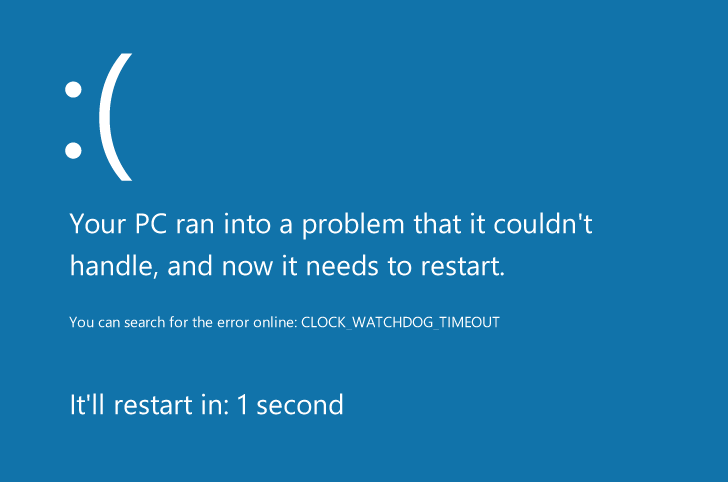
What is clock watchdog timeout BSOD error?
Clock watchdog timeout BSOD error is related to the processor in your computer.
The processor is the raw power behind all Windows operations. The system throws a clock watchdog timeout BSOD error when the processor is facing problem in managing the threads.
As you might know, the processor manages every operation in the form of threads.
Sometimes one thread is waiting for a response from another thread. When the processor does not receive a response in stipulated time for any thread, the operating system generates the clock watchdog timeout BSOD error.
Reasons behind clock watchdog timeout BSOD error
One of the reasons behind clock watchdog timeout BSOD error is drivers.
There is a possibility some drivers are incompatible, missing or have become corrupt.
Another possibility is some newly installed device is not compatible and causing the problem.
Now let’s look at the solutions.
Solution One – Update Drivers
As mentioned above, the clock watchdog timeout BSOD might be related to drivers.
A simple solution to this problem is updating drivers.
There are two methods to update display drivers – Manual and Automatic. Here we have provided both ways to update drivers.
Method One- Update Drivers Manually
- Press Windows logo key and R simultaneously on the keyboard to invoke Run command box
- In the Run command box, type devmgmt.msc and hit Enter on the keyboard
- In the Device Manager window, look for yellow exclamation mark beside devices
- Right-click on the problematic device and click Properties
- In the properties window, go to General tab
- Note down the name of the manufacturer name of the problematic device. Also, note down other details
- Now go to Driver tab and note down the driver version
- Close Device Manager
- Open Internet browser
- Go to device manufacturer website and type the name of the device in the search box.
- You will see the list of downloads available for the device. You need to be careful when downloading drivers. For example, if your computer has Windows 32-bit OS installed, you need to download and install 32-bit device drivers. Similarly, if you have 64-bit OS, you need to download 62-bit device drivers.
- Make sure you download the latest device drivers. For example, if you have driver version 11.24.09.5601 installed for the problematic device, you need to download higher version of the driver.
- After the latest device drivers are downloaded, double-click on the setup (.exe) file and follow on-screen instructions to install device drivers. If the driver setup file is in .zip format, unzip the file contents to a folder and then double-click on the setup(.exe file)
- Restart PC after installing device drivers
Run your computer for some time and see if the clock watchdog timeout BSOD error is generated.
If you feel the method of manually updating drivers is complicated, you can use a driver update software tool to update drivers automatically.
Method Two- Update Drivers Automatically
Automatic driver update tools offer many benefits, the most important ones being:
- You can update device drivers automatically
- The software scans and updates all outdated or missing drivers at one go
- The tool picks the right drivers for your device and operating system, so you won’t have to worry about installing an incorrect driver by mistake
- Automatic driver updates are 100% safe
Driver Updater is one of the best driver update tools out there. Outbyte Driver Updater will give you access to a database of over 1 million drivers. It will regularly scan your PC, suggesting new driver versions to install. Driver Updater contains drivers for a variety of Windows devices. With just one click, you can update drivers in your system.
Step 1
Click here to Install and launch the app
Step 2
Scan all devices
Step 3
Install or update drivers automatically
Solution Two- Install Windows updates
A large number of problems can be kept at bay or resolved by installing Windows updates.
Microsoft provides updates to Windows 10 to fix bugs and various issues crippling the operating system.
We recommend users to install all pending Windows updates that could resolve the issue.
Here are the steps to follow.
- Click Start button
- Click Settings(gear icon)
- In Windows settings, click Update & Security
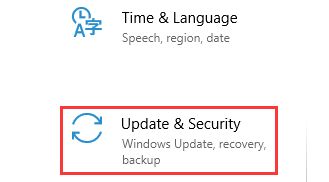
- In the next window, click Windows updates in the left pane
- In the right pane, click Check for updates
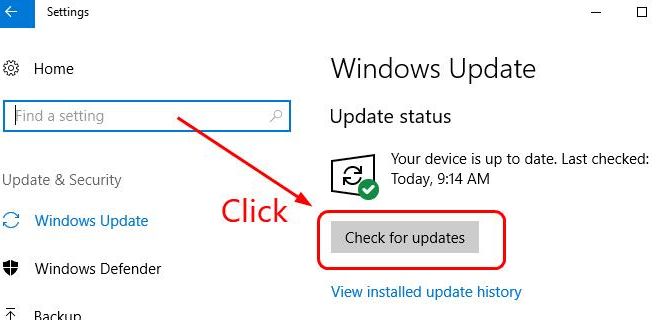
Windows will now connect to Update server and download and install all pending updates.
The whole process may take some time. Wait until the Windows completes the update process. Your computer may restart to install updates.
Solution Three- Disconnect new hardware
Can you recall when the lock watchdog timeout BSOD error started appearing?
Many users complained they started getting this error after installing new hardware.
Have you installed any new hardware recently? If the answer is Yes, disconnect new hardware and run your computer.
If you do not get lock watchdog timeout BSOD error after disconnecting new hardware, you can conclude the new hardware is not compatible with your computer.
However, if the lock watchdog timeout BSOD error is generated even after disconnecting new hardware, move to the next solution.
Solution Four – Uninstall 3rd party anti-virus software
Some antivirus software tools are known to cause BSOD error.
There is a possibility the 3rd party antivirus software installed in your system is causing some problem that leads to clock watchdog timeout BSOD error.
You can disable the antivirus temporarily and see if the clock watchdog timeout BSOD error is generated.
If the BSOD does not appear after disabling the 3rd party antivirus software, you can conclude the anti-virus program is the culprit behind clock watchdog timeout BSOD error.
You can either contact the software manufacturer and explain the problem and wait for a solution. Alternately, you can use Windows Defender antivirus that is in-built in Windows 10.
Here are steps to turn on Windows Defender in Windows 10.
- Click Start-> Settings(gear icon)
- In Windows settings, select Update & Security
- In the next window, click Windows Security in the left pane
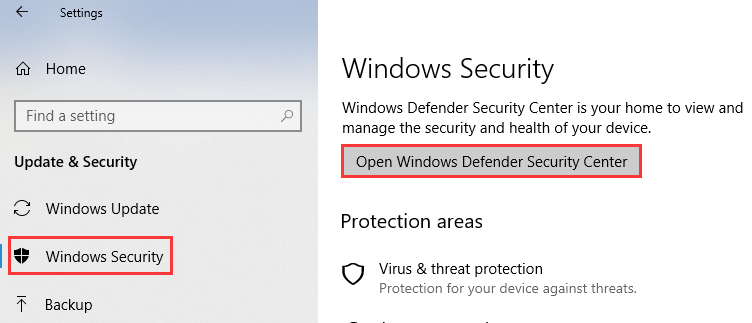
- Click Open Windows Defender Security Center in the right pane
- In the Windows Defender Security Center dialog, click virus and threat protection setting
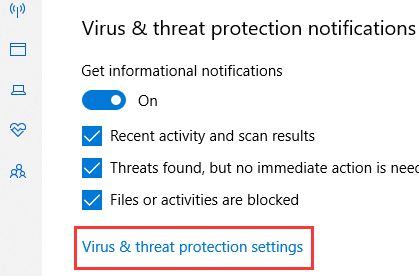
- In the next window, click the slider under Real Protection to turn on Windows Defender
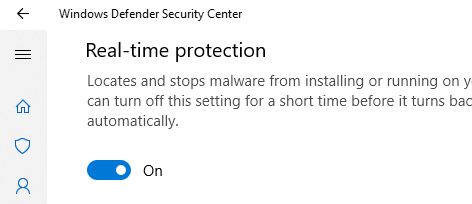
- Close all windows
If the solution does not help resolve the clock watchdog timeout error, move to next solution.
Solution Five-Run System File Checker
You cannot ignore the possibility of corrupt system files behind clock watchdog timeout BSOD error. Windows operating system has a built-in system file checker tool that checks the integrity of the system file and replaces any corrupt system file it finds.
Here are the steps to run the system file checker tool.
- On your keyboard, press the Windows logo key and X same time to bring up Start Menu
- Click Command Prompt(admin) from the list of results
- In the command prompt window, type sfc /scannow and hit Enter on your keyboard.
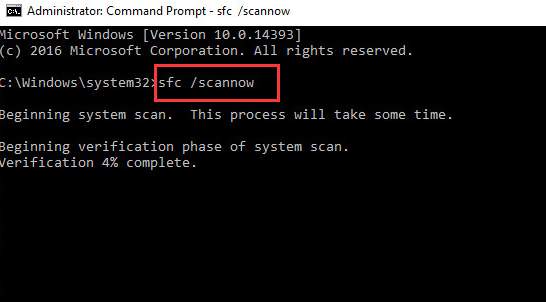
- The System File Checker tool scans system files and repairs any corrupt files it finds.
- Wait for the SFC tool to complete its task.
Check if the issue has been resolved. If you still get the error, try the next solution
Solution Six- Set the BIOS settings to default
Many Windows users overclock the processor for optimal performance.
If you have tweaked BIOS settings, it might be causing clock watchdog timeout BSOD error. In that case, resetting BIOS settings to default can help resolve the issue. H
ere are the steps to reset BIOS settings to default.
Note- You need to press a specific key or key combination to enter BIOS settings and it might be different for every motherboard manufacturer. Read your motherboard documentation or computer manual to know the exact key or key combination to enter BIOS settings.
- When your system is booting, press the right key to enter BIOS
- When you enter BIOS settings, you will see a list of keys at the bottom of the screen. One of the keys will read Setup Defaults or something similar( it will have word “default “)

- Press the right key to reset BIOS settings
- If prompted for confirmation, press Y
- Wait for the BIOS reset to complete
- Save BIOS settings and exit BIOS
- Restart your computer
Run your computer to see if the issue is resolved. If you still get the clock watchdog timeout error, move to the next solution.
Solution Seven-Run Windows MemTest
Several BSOD errors are linked to memory and you cannot ignore the possibility of clock watchdog timeout error related to memory.
Luckily, Windows comes with an in-built tool that can check the memory for errors.
If the memtest reports any errors, the only solution available is replacing the faulty memory module.
Here are the steps to run Windows MemTest
- On your keyboard, press the Windows logo key and type Windows memory diagnostic in the box
- Select Windows Memory Diagnostic from the list of results
- In the WindowsMemory Diagnostic pop up dialog, you will get two options -1) Restart now and check for problems (recommended). If you choose the 1st is an option, the computer would reboot immediately and the Windows Memory Diagnostic tool runs at startup
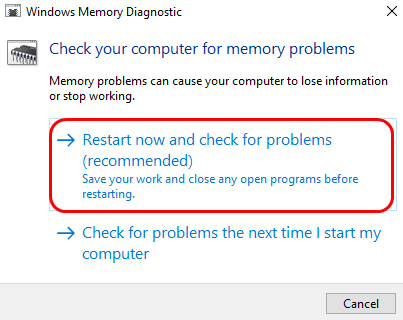
- The 2nd option says Check for problems the next time I start my computer. If you select the 2nd option, Windows will run the WindowsMemory Diagnostic tool during the next system restart.
- Here we have chosen the 1st option – Restart now and check for problems (recommended) which restart the computer immediately and you will see memory test running at booting.
- You would see a similar screen like the one below which is WindowsMemTest tool running on your PC. Have patience as it may take some time for the test to complete. You can see the progress of the memtest and also see if any errors are detected by the Windows Memory Diagnostic tool.
After the memtest process is completed, Windows will boot normally.
In most cases, the clock watchdog timeout BSOD error should be resolved now.

Leave a Reply